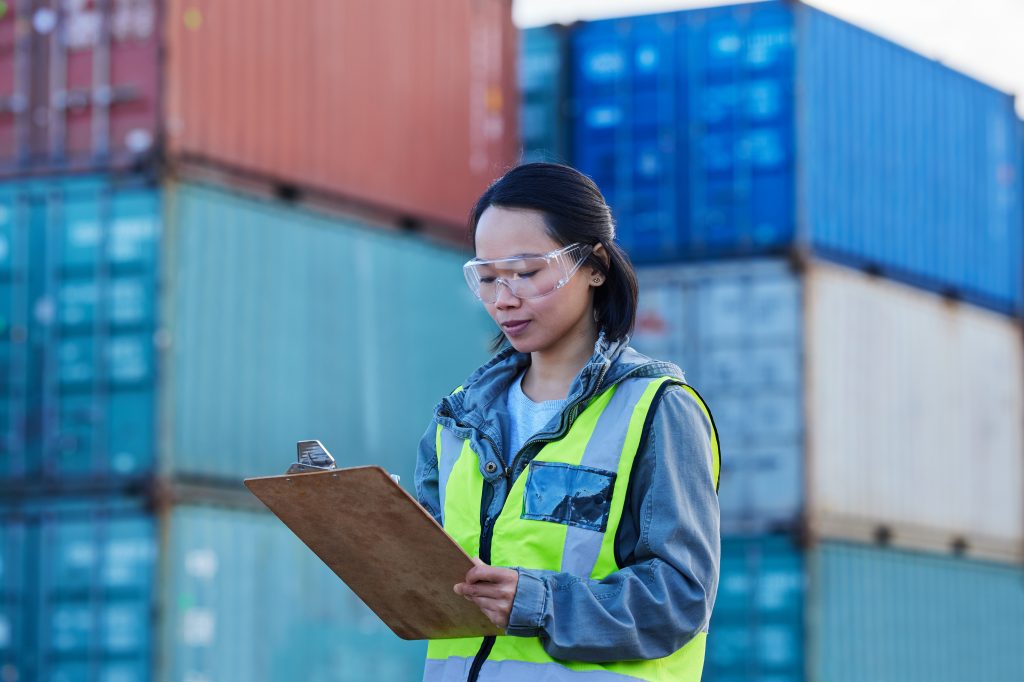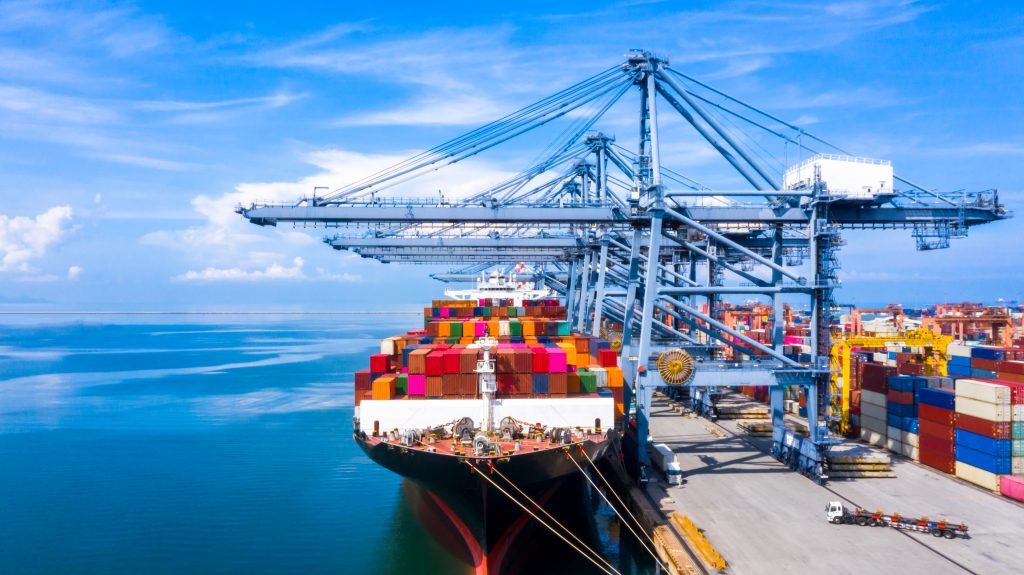International trade relies heavily on maritime transportation, which also serves as a major force behind commerce and competition. The sea carries more than 70% of the value and almost 80% of the volume of world trade. Being an archipelago, the Philippines’ economy is heavily reliant on sea transportation to link its main islands to the rest of the globe and the rapidly evolving Asian region. The Philippines’ capacity to profit from the sea is thus determined by the caliber of its ports, the interconnecting transportation facilities, maritime workers, security and stability, and laws and ordinances. Let’s learn more about the port and shipping management in the Philippines.

What is Port and Shipping Management?
Port and shipping management is the area of management that has to do with ports and transportation. Such professionals seek employment in the port industry and allied sectors such as shipping, unloading, loading, storage, customs, utilizing, and protection, respectively.
State of Port and Shipping Management in the Philippines
The Philippines can fully seize its possibilities, overcome more of its obstacles, and establish itself as a major shipping hub in the Pacific region as well as globally by focusing its actions and initiatives on expanding its “Blue Economy,” encompassing fishery.
It’s critical that the nation create bold plans to boost exports of particular industrial and agricultural products where the Philippines is viable worldwide and to promote labor throughout the country.
What is the Philippine Ports Authority?
Philippine Ports Authority was founded on July 11, 1974, under Presidential Decree (P.D.) No. 505 and is tasked with creating, developing, managing, and overseeing a streamlined national port system to promote commerce and economic growth. PPA’s Charter was revised on December 23, 1975, by P.D. No. 857, which expanded PPA’s purview and capabilities to enable the execution of a comprehensive plan for the nation-wide advancement, funding, operations, and upkeep of ports or port areas.
Network of Ports and Shipping in the Philippines
The Philippines has a vast port chain that is spread out over the country and consists of 23 main ports and over 100 smaller ports. It’s a significant facet of the nation’s maritime industry. The maintenance of the ports’ efficient functioning and expansion falls within the purview of the Philippine Ports Authority (PPA).
Transnational eCommerce surged, and internet businesses expanded as a result of the pandemic. The food and beverage industries, technological devices, manufacturing, and automotive, pharmaceutical, and eCommerce sectors are important sources of income for Philippine logistics companies.
Trade Imbalance of Port and Shipping in the Philippines
The Philippines is more well-known for its commercial manufacturing sector (BPO) and export of foreign labor than for its produced goods. The phrase “Made in the Philippines” is becoming less common on products used domestically and less common on products used abroad.
The emergence of a viable product-exporting component has been overshadowed by the rise of the field of services, which has evolved into the largest industry in the economy due to consumption-driven expansion and a drop in global production.
Ports and Shipping Development in the Philippines
Dock modernization is essential for reducing transportation expenses since it provides ship-to-shore gantries, adequate excavation, worker efficiency, and port capacity, followed by valuable turn-around time. In the nation, there are 232 maritime construction, vessel maintenance, and shipyards that are officially registered. Seven of these are capable of meeting international criteria.
Growing trade across the Philippines and the rest of the world has made it clear that building hard port facilities, modernizing technology, and streamlining procedures would take time and effort. The development of additional service industries, including ship trading, ship authority, freight forwarding, and logistics services, will be further facilitated by a contemporary and effective logistics infrastructure.
Regulatory Implications on Port and Shipping in the Philippines
One of the constraining restrictions that reduces the competitiveness of Philippine seaports as a result of poor governance is the modification of regulations. The primary organization in charge of the creation, management, and oversight of all publicly owned ports, along with the control of private ports, is the Philippine Ports Authority (PPA), which is housed inside the Department of Transportation.
Over time, the PPA has increased the prices for cargo handling. But a lot of its ports are still undeveloped and lack the necessary port facilities, like ship-to-shore gantry cranes and appropriate dredging. The PPA should ensure that the necessary port development is implemented when higher rates are levied in ports that demand greater infrastructure expenditure. In accordance with official government figures, the PPA has modified its rate increase method to an inflation-based formula.

Legislative Reforms on Ports and Shipping in the Philippines
The maritime industry has been impacted by two significant reforms throughout the last 20 years. Former President Gloria Macapagal-Arroyo issued Executive Order No. 170-A in 2003 to permit cargo-carrying trucks to roll onto and off of ships, eliminating the need for expensive cargo handling.
Republic Act No. 10668, also known as An Act Authorizing Foreign Vessels to Transport and CoLoad Foreign Cargoes for Domestic Transshipment, was another significant reform for the shipping sector that was passed in 2015. According to the law, a foreign ship arriving from a foreign port may transport foreign goods to the port of final destination or the transshipment port in the Philippines.
The law also permits foreign ships to transport cargo from a port of origin in the Philippines to a domestic transshipment port and then to a final foreign port of arrival. This was a significant development for the Philippine shipping industry’s definition of transportation.
Challenges of Ports and Shipping in the Philippines
Customs
Logistics competency is said to be more difficult in the Philippines due to customs. When compared to other countries that have single windows for customs and electronic applications, the nation is at a competitive disadvantage. The administrative complexity of submitting separate import authorization applications to different agencies is noticeable.
It could be difficult and time-consuming to stay up to date with all the changes to customs requirements. Certain logistics companies focus on or help in navigating these regulations. Moreover, a few of them employ automated processes to guarantee that all of your documentation is complete and current. This facilitates the smooth passage of your shipments through customs, guaranteeing on-time delivery and happy clients.
Logistics Network
The Philippines has an insufficient amount of logistical infrastructure. Metro Manila, which ranked 18th worst in the world in 2021, usually encounters congested roadways. That being said, even though the Philippine government has promised to improve and rebuild the nation’s infrastructure through more investments in logistics and procurement platforms.
E-Commerce Opportunities for Ports and Shipping in the Philippines
Growing online shops and international eCommerce platforms find favor in the Philippines. The Philippines is ideally situated to facilitate commerce with numerous other significant participants in the world economy, including China, Vietnam, Japan, and many others. It is a founding member of the Asia-Pacific Economic Cooperation (APEC), the Association of Southeast Asian Nations (ASEAN), and the World Trade Organization (WTO).
Adoption of Digitization in the Ports and Shipping of the Philippines
By adopting digitalization, logistics and supply chain companies can benefit from larger prospects presented by the Philippines’ growing economy, particularly in eCommerce. When digital transformation is applied to its full potential, it can raise worldwide revenue from digital logistics by 21.5% between 2022 and 2029. That might bring in more than USD 99.16 billion.
What is the “Digital Rise Program”?
The logistics market in the Philippines has the potential to fully explore and utilize its digital possibilities. A number of laws, such as the “Digital Rise Program,” have already been put in place to hasten the digital transition. The industry should place a strong emphasis on developing digital skills, speeding up digital innovation and adoption, and promoting opportunities for digital commerce.
Market for Growth of Ports and Shipping in the Philippines
Establishing an international eCommerce business can be achieved by venturing into the Philippines. Younger and more tech-savvy people make up a sizable portion of the population, which has tremendous growth potential in the eCommerce sector. 20.1% of financial transactions in 2020 ($46.8 billion) were digital payments, according to the Philippines Bangko Sentral ng Pilipinas, an increase of 61% over 2019.

Despite its particular difficulties, the Philippine shipping sector is being modernized and streamlined. Your logistics and delivery procedures will be significantly streamlined when you use the appropriate procurement platforms. Working with reliable and informed shipping partners at every stage will enable you to accomplish flawless cross-border shipping to the Philippines.
The Philippines’ harbors and maritime sector have a very promising future. For a very long time, ports have been essential to the nation’s economic activity. Growing international trade offers Philippine ports a huge chance to grow and become more important in intraregional trade. Trade inside Asia is expanding rapidly and is starting to overtake transportation between Asia and Europe and the Trans-Pacific.









